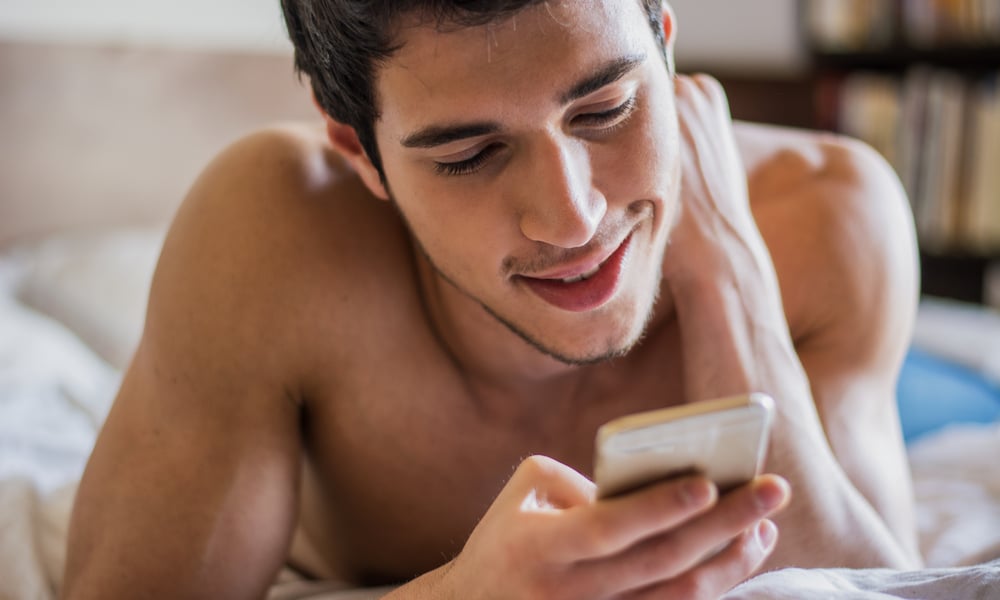Grindr’s HIV data problem began when it asked users to disclose their status.
There has been an enormous groundswell of public condemnation after reports emerged recently that hook-up app Grindr has been sharing data on the HIV status of its users to two external analytics companies it was working with. Most of the uproar has focused on data ownership and privacy — but to get to the heart of the problem, it pays to rewind the story and look at how and why Grindr introduced “HIV status” as one of the “stats” its users are invited to disclose.
We’ve come a long way since the US Centers for Disease Control Control and Prevention (CDC) reported five cases of Pneumocystis Pneumonia among sexually active homosexual men in June 1981. That CDC report set in motion a series of events that led to the identification of a new retrovirus in 1983 and its naming, three years later, as the Human Immunodeficiency Virus (HIV). Since then — and thanks to pressure from activists — medical research on HIV and AIDS has passed several milestones, from the development of successful antiretroviral treatments in 1996 to the more recent introduction of Pre-Exposure Prophylaxis (PrEP), which research now shows can successfully prevent HIV infection. Successful treatment regimes, meanwhile, can make HIV-positive people uninfectious.
But people living with HIV remain targets of stigma, moral judgement and discrimination. Unfortunately, that is also the case within the so-called “gay community”, a population that’s been the face of HIV and AIDS in the West right from the moment the epidemic first made it to the news.

Ever since then, many gay and bisexual men have tried to distance themselves from all associations with HIV. There are plenty of different strategies out there. Some have (wrongly) dismissed the virus as primarily a risk for “bottoms” (as Jeffrey Escoffier claims in Bigger than Life). Some have fought back against the stereotypical image of an AIDS patient by cultivating “healthy” looks at the gym. And others have simply shunned anyone deemed promiscuous.
Since the 1980s, then, HIV has played a central role in the development of gay masculinities — and even today we’re still compelled to define ourselves according to it. As many people have said before: “We are all living with HIV”, whether by living with the actual virus or by being expected to position ourselves in relation to it — that is, to state on which side of the positive/negative binary we fall on.
Related | 15 Most Common HIV Symptoms in Men
No surprise then that in 2016, Grindr introduced “HIV Status” as one of the “stats” its users are invited to provide about themselves. Pitching the decision as a way to “support the health and safety of users worldwide” was part of Grindr’s move towards rebranding itself as a company that promotes “justice, health, safety, and more for LGBTQ individuals around the globe.” But given that HIV stigma remains prevalent worldwide, and that Grindr profiles’ stats are used as a way of filtering out “undesirable” profiles, Grindr’s intention of ending stigma by inviting people to disclose their HIV status may have a very different impact.
Filtering as quarantine
HIV status is just one of a list of measures against which Grindr users can define themselves. The full list reads as follows:
- Age
- Height
- Weight
- Body type — Toned, Average, Large, Muscular, Slim, Stocky
- Position — Top, Vers top, Versatile, Vers bottom, Bottom
- Ethnicity — Asian, Black, Latino, Middle Eastern, Mixed, Native American, White, South Asian, Other
- Relationship status — Committed, Dating, Engaged, Exclusive, Married, Open Relationship, Partnered, Single
- My Tribes — a long checklist of categories, including Trans, Discreet, and “Poz” (HIV positive)
- I’m Looking For — Chat, Dates, Friends, Networking, Relationship, Right Now
Below this list are two sections: one where a user can choose whether to display their gender identity and preferred pronouns, and one where they can display their HIV status and the date they were last tested.
None of these categories has to be selected or filled in for a user to have an active profile. But Grindr doesn’t just invite users to define themselves by these characteristics — it allows them to filter the profiles they see to show only those meeting their preferences. And there are all sorts of categories Grindr doesn’t offer its users — “hairstyle”, “favorite color”, “favorite superhero”. So why these ones?
Here's What You Should Know Regarding Your HIV Status Data
Jack Harrison-Quintana, our VP of Social Impact and founder of Grindr for Equality, addresses concerns about HIV status information on Grindr and explains how we handle user data. Read our full statement about our HIV status data here: https://grindr.tumblr.com/post/172528912083/heres-what-you-should-know-regarding-your-hiv
Posted by Grindr on Thursday, April 5, 2018
Giving users a choice of defining features is never a neutral decision. Instead, the set of choices provided always indicates some judgement about what ought to be valued. In a nutshell, all systems of classification are ideological. By compelling its users to either state their HIV status or withhold it, Grindr enforces a norm that someone’s HIV status isn’t just something for others to care about, but a legitimate characteristic on which to base the choice of a sexual or romantic partner.
This is out of step with the reality of life with HIV today. We’ve seen incredible progress in the treatment and prophylaxis of HIV, before and after exposure. Having an undetectably low viral load, now achievable with antiretroviral drugs, means someone won’t be able to transmit the virus — and condoms and PrEP are highly successful at preventing HIV infection. Yet Grindr still offers HIV status as a marker of identity.
Related | How the Daryll Rowe Case Could Change HIV Transmission Laws
That the company has shared the resulting data with external parties isn’t the point. By making HIV status one of the stats available to its users, the company continues to invite them to disclose their HIV status and to discriminate on the basis of other users’ answers. Granted, disclosure of HIV status is not compulsory, but the very invitation to do so puts HIV-positive users in a bind: if they disclose it, they’ll have to face being potentially discriminated against; if they don’t give an answer, they will likely be seen to be hiding their status; if they answer “negative”, they’ll have to commit to lying.
Whichever way users answer it, Grindr’s invitation to disclose HIV status arguably still positions HIV-positive folk as solely responsible for halting HIV transmission. That is too heavy a burden for one partner to carry. In the end, sex and pleasure always involve decisions on assessing and managing risk — and those decisions are incumbent on all people involved, regardless of “status”.
João Florêncio is a Lecturer in History of Modern and Contemporary Art and Visual Culture at the University of Exeter.
This article was originally published on The Conversation. Read the original article.







